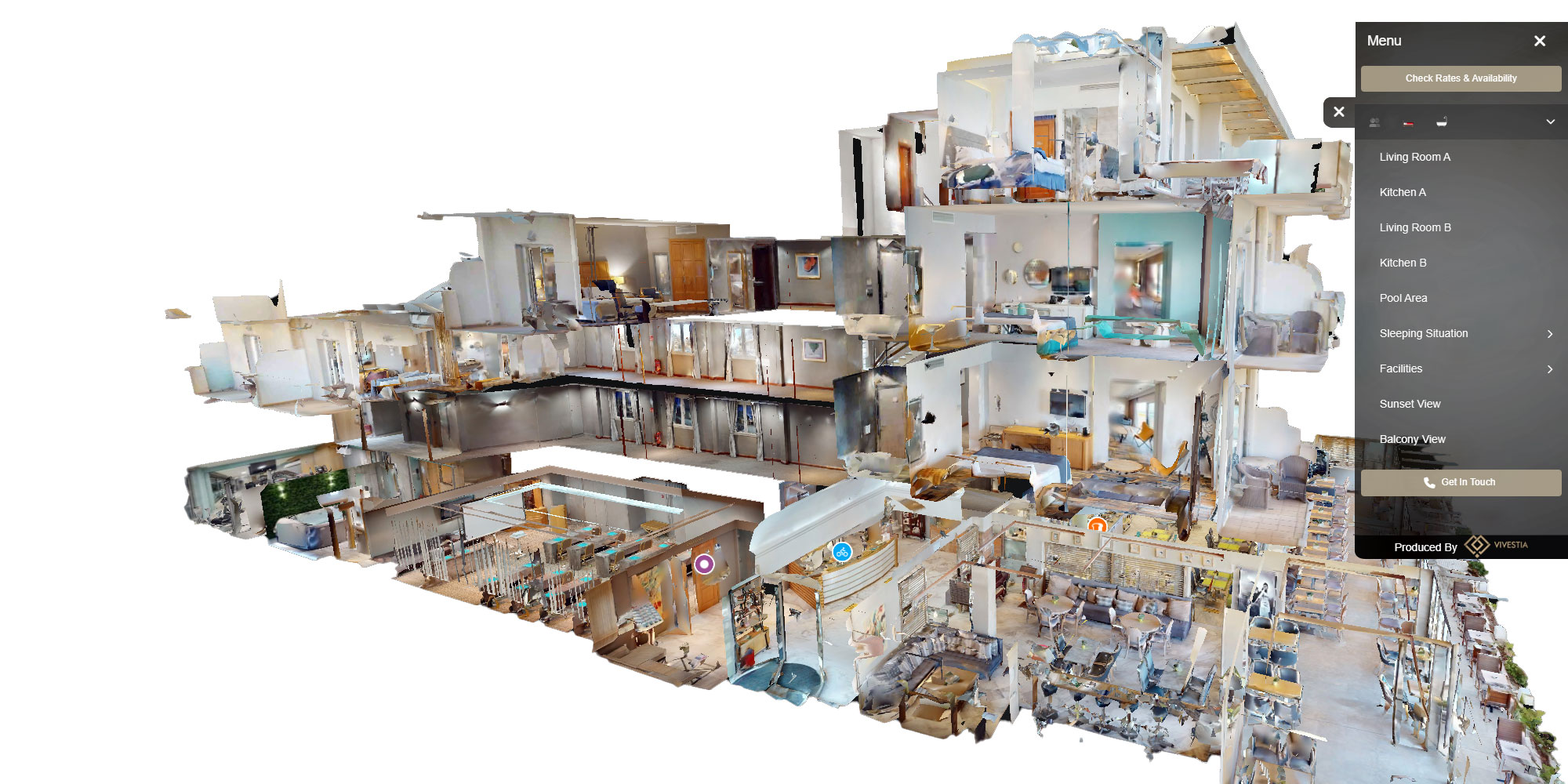Last Updated on 13/12/2023 by Manolis Maragkoudakis
360 Degrees of Engagement: How the Technology Benefits Marketing

Introduction to 360 degree engagement in marketing
In today’s digital age, marketing has become more complex than ever before. With so many channels and platforms to engage with customers, it’s crucial for businesses to find innovative ways to stand out from the competition.
One such way is through 360 degree engagement, a technology that has revolutionized the marketing landscape. In this article, we will delve into the concept of 360-degree engagement, explore its benefits, and discuss how businesses can incorporate it into their marketing strategies.
Understanding the concept of 360 degree engagement
360 degree engagement refers to a comprehensive approach to marketing that involves engaging customers across multiple touchpoints and channels. It is about creating a seamless and immersive experience for customers, where they feel connected to the brand at every stage of their journey.
Unlike traditional marketing approaches that focus on one-way communication, 360-degree engagement embraces a two-way dialogue, allowing businesses to listen to their customers and tailor their messaging accordingly.
One of the key elements of 360 degree engagement is personalization. By leveraging data and analytics, businesses can gather insights about their customers and deliver targeted, relevant content. This not only enhances the customer experience but also increases the likelihood of conversions and sales. Additionally, 360 degree engagement enables businesses to build stronger relationships with their customers, fostering loyalty and advocacy.
The benefits of 360-degree engagement in marketing
The adoption of 360-degree engagement in marketing offers numerous benefits for businesses. Firstly, it enables businesses to provide a consistent brand experience across all touchpoints. Whether a customer is interacting with the brand through social media, email marketing, or in-store, they will receive a cohesive and unified message. This consistency helps to build trust and credibility, which are vital for long-term customer relationships.
Secondly, 360 degree engagement allows businesses to gain a deeper understanding of their customers. By collecting and analyzing data from various sources, businesses can gain insights into customer preferences, behaviors, and interests.
This information can then be used to personalize marketing efforts, ensuring that customers receive content that is relevant and valuable to them. Personalization not only improves the customer experience but also increases engagement and conversions.
Thirdly, 360 degree engagement enables businesses to create more targeted and effective marketing campaigns. By leveraging data and analytics, businesses can identify the most effective channels and touchpoints to reach their target audience.
This helps to optimize marketing spend and resources, ensuring that efforts are focused on areas that yield the highest return on investment. Additionally, 360-degree engagement allows businesses to track and measure the success of their marketing campaigns, providing valuable insights for future optimization.
How to incorporate 360 egree engagement into your marketing strategy
Now that we have explored the concept and benefits of 360 degree engagement, let’s discuss how businesses can incorporate it into their marketing strategies. The first step is to conduct a thorough audit of existing marketing channels and touchpoints.
This will help businesses identify gaps and areas for improvement. Once the audit is complete, businesses can start to integrate new channels and touchpoints to create a comprehensive and seamless brand experience.
Next, businesses should focus on data collection and analysis. By leveraging customer data from various sources such as CRM systems, website analytics, and social media platforms, businesses can gain valuable insights into customer preferences and behaviors.
This data can then be used to personalize marketing efforts, ensuring that customers receive content that is tailored to their needs and interests.
Another important aspect of incorporating 360-degree engagement into a marketing strategy is to prioritize customer engagement and interaction. This can be achieved through various means such as social media engagement, email marketing campaigns, and personalized customer service. By actively engaging with customers and responding to their needs, businesses can foster a sense of loyalty and advocacy.
Tools and technologies for implementing 360 degree engagement
Implementing 360 degree engagement requires the right tools and technologies. Fortunately, there are a wide range of solutions available to help businesses effectively engage with customers across multiple touchpoints.
Customer Relationship Management (CRM) systems are essential for managing customer data and interactions. These systems allow businesses to centralize customer information, track customer touchpoints, and automate marketing campaigns. CRM systems also enable businesses to segment their customer base and deliver personalized content.
Marketing automation platforms are another crucial tool for implementing 360 degree engagement. These platforms enable businesses to automate marketing tasks, such as email campaigns and social media posting. They also provide advanced analytics and reporting capabilities, allowing businesses to track the success of their marketing efforts and make data-driven decisions.
In addition to CRM systems and marketing automation platforms, businesses can also leverage technologies such as artificial intelligence (AI) and machine learning.
These technologies can help businesses analyze large volumes of data and identify patterns and trends. By understanding customer behaviors and preferences, businesses can deliver more relevant and personalized content.
Challenges and considerations when using 360 degree engagement in marketing
While 360 degree engagement offers numerous benefits, there are also challenges and considerations that businesses need to be aware of. One of the main challenges is data privacy and security.
As businesses collect and store large amounts of customer data, they need to ensure that it is protected and used in accordance with privacy regulations. This requires implementing robust security measures and obtaining customer consent for data collection and usage.
Another challenge is the complexity of managing multiple touchpoints and channels. With so many platforms and channels to engage with customers, businesses need to have a clear strategy and plan in place. This includes defining target audiences, selecting the most effective channels, and creating consistent messaging across all touchpoints.
Additionally, businesses need to continuously adapt and evolve their 360 degree engagement strategies to keep up with changing customer expectations and technological advancements. This requires ongoing monitoring and analysis of customer data, as well as staying up to date with the latest marketing trends and technologies.
Future trends and developments in 360 degree engagement technology
As technology continues to advance, we can expect to see further developments in 360-degree engagement technology. One of the key trends is the integration of augmented reality (AR) and virtual reality (VR) into marketing campaigns. These technologies offer immersive and interactive experiences, allowing businesses to engage with customers in new and exciting ways.
Another trend is the use of chatbots and artificial intelligence in customer service and support. Chatbots can provide instant and personalized responses to customer queries, improving the overall customer experience.
AI algorithms can also be used to analyze customer data and provide predictive insights, enabling businesses to anticipate customer needs and deliver proactive marketing campaigns.
Finally, we can expect to see advancements in data analytics and predictive modeling. As businesses collect more data and leverage advanced analytics tools, they will be able to gain deeper insights into customer behaviors and preferences. This will enable businesses to deliver even more personalized and targeted marketing campaigns, further enhancing the customer experience.
Conclusion: Embracing the power of 360-degree engagement in your marketing efforts
In conclusion, 360-degree engagement is a powerful technology that has revolutionized the marketing landscape. By engaging customers across multiple touchpoints and channels, businesses can create a seamless and immersive brand experience. The benefits of 360-degree engagement are numerous, including increased customer loyalty, improved conversions, and optimized marketing campaigns.
To incorporate 360-degree engagement into your marketing strategy, it is important to conduct a thorough audit of existing channels and touchpoints, prioritize data collection and analysis, and focus on customer engagement and interaction. By leveraging tools and technologies such as CRM systems, marketing automation platforms, and AI, businesses can effectively implement 360-degree engagement.






Post Discussion